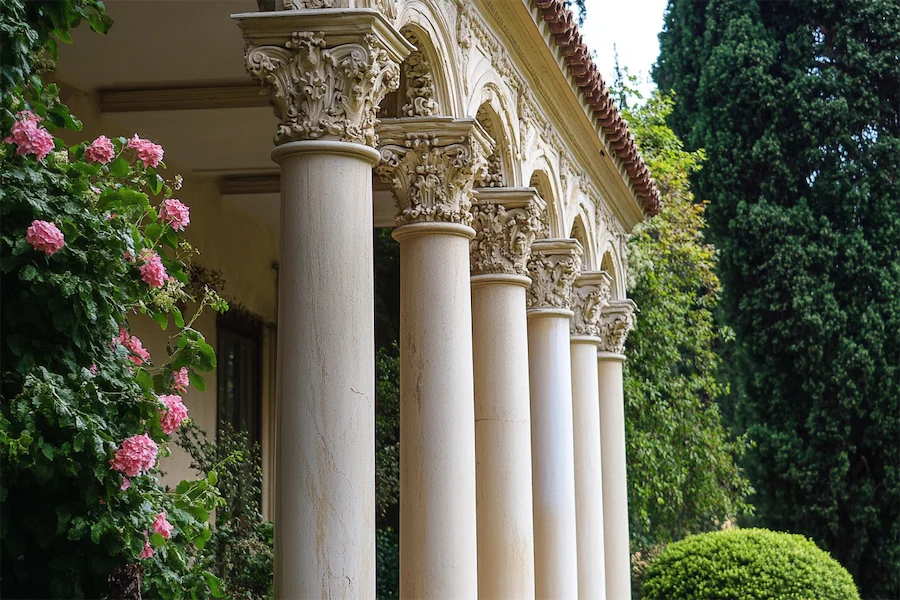Rococo architecture, which emerged in early 18th-century France, is renowned for its ornate and decorative style, emphasizing asymmetry, intricate detailing, and lightness. Columns within Rococo architecture often transcend their structural role, becoming canvases for elaborate artistic expression.
Introduction to Rococo Columns
In Rococo design, columns are integral to creating the whimsical and elegant ambiance characteristic of the style. They are frequently adorned with intricate carvings, gilding, and motifs inspired by nature, contributing to the overall sense of movement and fluidity within a space.
History and Origins of Rococo Columns
The Rococo movement developed as a reaction against the grandeur and formality of Baroque architecture. It favored more intimate settings and lighter aesthetics. Columns in Rococo architecture were often slimmer and more decorative than their Baroque predecessors, reflecting the shift towards elegance and playfulness. The use of stucco allowed for detailed and delicate designs, making columns appear almost weightless.
Key Features of Rococo Columns
Rococo columns are distinguished by several key features:
- Asymmetry: Unlike the balanced proportions of classical columns, Rococo columns often feature asymmetrical designs, adding to the dynamic and lively feel of the space.
- Ornamentation: Extensive use of decorative elements such as shells, flowers, and scrolls, often rendered in stucco or gilded finishes, enhances the visual appeal.
- Integration with Surroundings: Columns are designed to blend seamlessly with other architectural elements, such as walls and ceilings, often dissolving into elaborate patterns that unify the space.
Applications of Rococo Columns
Notable examples of Rococo columns include:
- Amalienburg Pavilion, Munich: This hunting lodge features interior columns adorned with intricate stucco work and pastel colors, epitomizing the Rococo emphasis on lightness and decoration.
- Catherine Palace, Russia: The grand halls showcase columns embellished with gilded carvings and mirrors, creating an opulent and airy atmosphere.
Considerations When Designing Rococo Columns
When incorporating Rococo columns into a design, architects should consider:
- Material Selection: Utilizing materials like stucco allows for the fine detailing characteristic of Rococo ornamentation.
- Craftsmanship: The intricate designs require skilled artisans to execute the delicate carvings and gilding effectively.
- Contextual Harmony: Ensuring that the elaborate columns complement other interior elements to maintain a cohesive and harmonious aesthetic.
Conclusion
Rococo columns exemplify the movement’s departure from the solemnity of Baroque architecture, embracing a more playful and decorative approach. Their intricate designs and integration into the overall aesthetic contribute to the creation of spaces that are both elegant and inviting, leaving a lasting impression of sophistication and artistic flair.
